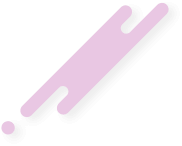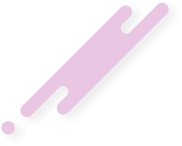161
glassescel
★★★★★
- Joined
- May 14, 2023
- Posts
- 11,714
Chimpanzees have an alpha leader, although the betas hardly reproduce at all, and the really ugly ones usually live in isolation because the community is too dangerous for them, as the other apes would kill the weakest male ape.
It's similar with gorillas: silverbacks become fully-fledged alpha males at the age of 12, although not every gorilla becomes a silverback.
With orangutans, an orangutan can only become an alpha when the alpha male is gone; otherwise, his transformation is suppressed until the alpha male is gone.
That's strange with orangutans.
A male orangutan is hormonally suppressed until the alpha male is gone.
Only when he is gone can testosterone develop.
Then they get this weird face with these bulges. It's similar in humans: almost all alpha males have full beards, which arose through sexual selection (Charles Darwin). Just as orangutans have ridges, so do humans have beards.
The male beard developed through sexual selection and if you have one you know that you are not an ultra subhuman.
"Orangutans do indeed have a very distinctive face and this is especially the case in males. The striking facial features, especially the large, flat cheek ridges (also called "cheek ridges" or flanges), may look "odd" from a human perspective, but they have very clear biological reasons:
1. Sexual Selection
Cheek ridges develop in sexually mature males and signal:
strength and dominance over other males,
attractiveness to females. Females often prefer males with these ridges because they are associated with maturity, experience, and reproductive success.
2. Vocal Amplification
The throat sacs, which many male orangutans also have, act as resonators and amplify their calls ("long calls"). These calls help:
attract females from a distance,
keep other males away.
3. Individual Differences
Not all male orangutans develop these facial ridges immediately. Some remain "unflanged" (without cheek ridges) even after reaching sexual maturity. This is part of a unique reproductive strategy in orangutans – they have two successful male forms: dominant "flanged males" and "sneaky males" without ridges."





It's similar with gorillas: silverbacks become fully-fledged alpha males at the age of 12, although not every gorilla becomes a silverback.
With orangutans, an orangutan can only become an alpha when the alpha male is gone; otherwise, his transformation is suppressed until the alpha male is gone.
That's strange with orangutans.
A male orangutan is hormonally suppressed until the alpha male is gone.
Only when he is gone can testosterone develop.
Then they get this weird face with these bulges. It's similar in humans: almost all alpha males have full beards, which arose through sexual selection (Charles Darwin). Just as orangutans have ridges, so do humans have beards.
The male beard developed through sexual selection and if you have one you know that you are not an ultra subhuman.
"Orangutans do indeed have a very distinctive face and this is especially the case in males. The striking facial features, especially the large, flat cheek ridges (also called "cheek ridges" or flanges), may look "odd" from a human perspective, but they have very clear biological reasons:
1. Sexual Selection
Cheek ridges develop in sexually mature males and signal:
strength and dominance over other males,
attractiveness to females. Females often prefer males with these ridges because they are associated with maturity, experience, and reproductive success.
2. Vocal Amplification
The throat sacs, which many male orangutans also have, act as resonators and amplify their calls ("long calls"). These calls help:
attract females from a distance,
keep other males away.
3. Individual Differences
Not all male orangutans develop these facial ridges immediately. Some remain "unflanged" (without cheek ridges) even after reaching sexual maturity. This is part of a unique reproductive strategy in orangutans – they have two successful male forms: dominant "flanged males" and "sneaky males" without ridges."
Last edited:





